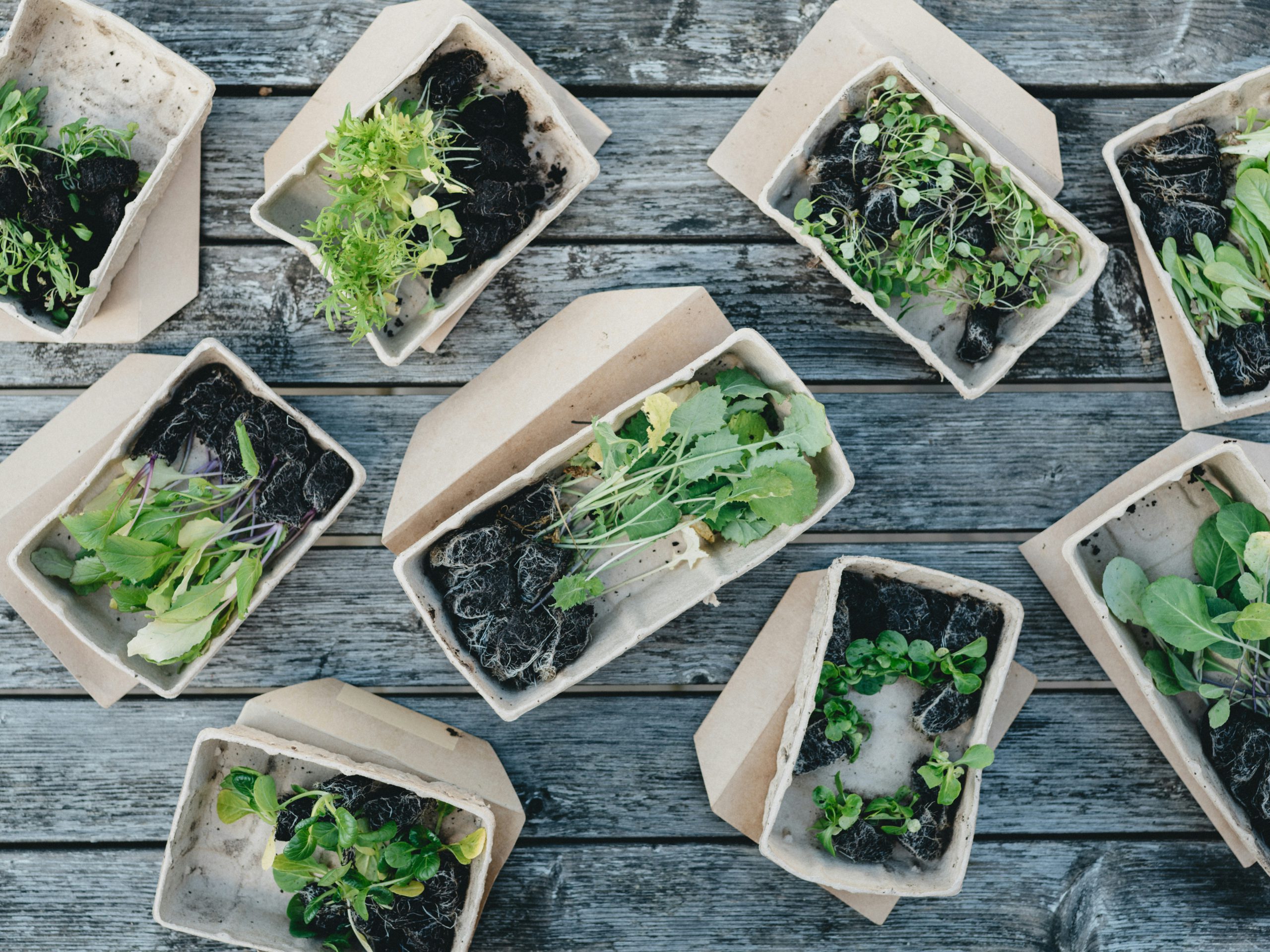
Photo: Annie Spratt
April is a Good Time to… Grow Your Own Herbs
There are a few rules to growing herbs, but they’re not tricky.
Many of the herbs we typically grow (think rosemary, thyme, sage and oregano) are Mediterranean natives, which need good drainage at their roots to thrive. Otherwise they’ll become waterlogged and the plants will rot. So make sure your pot has plenty of drainage holes at the base. You can drill more in if necessary. Cover these holes with a few stones or some gravel (pieces of broken terracotta pot are ideal) to stop them getting blocked up, then fill the pot with a mixture of multipurpose compost (about three-quarters) and horticultural grit (one quarter).
Then it's Time to Choose Your Herbage
It’s entirely up to you of course, but a mixture of Mediterranean stalwarts makes sense, while aesthetically a single large plant for the centre of the pot always looks great. This could be bay, for example, rosemary, lemon verbena or purple sage. Then arrange the smaller, low-growing herbs around it – here thyme, basil, oregans and parsley work well. A word of warning on mint: don’t mix it in a pot with other herbs as it’s far too invasive and will quickly force the others into submission.
If you like, you can add a mulch of gravel or decorative stones. Yes, they look pretty and set off the plants nicely, but they also serve a practical purpose, keeping out weeds, preserving moisture and making maintenance that little bit easier.
To keep your herb planter looking at its best, water regularly, especially in the summer. We think there’s nothing sadder than a beautifully arranged pot of herbs, or flowers, left to with and die. If you’re going away, stand your pot in a reservoir of water if nobody’s popping round to help. Feed with a liquid feed every fortnight throughout summer, and harvest at first sparingly, as they grow in, then regularly (you’ll encourage them to bush out by picking the leaves).
6 of The Best Herbs for a Pot
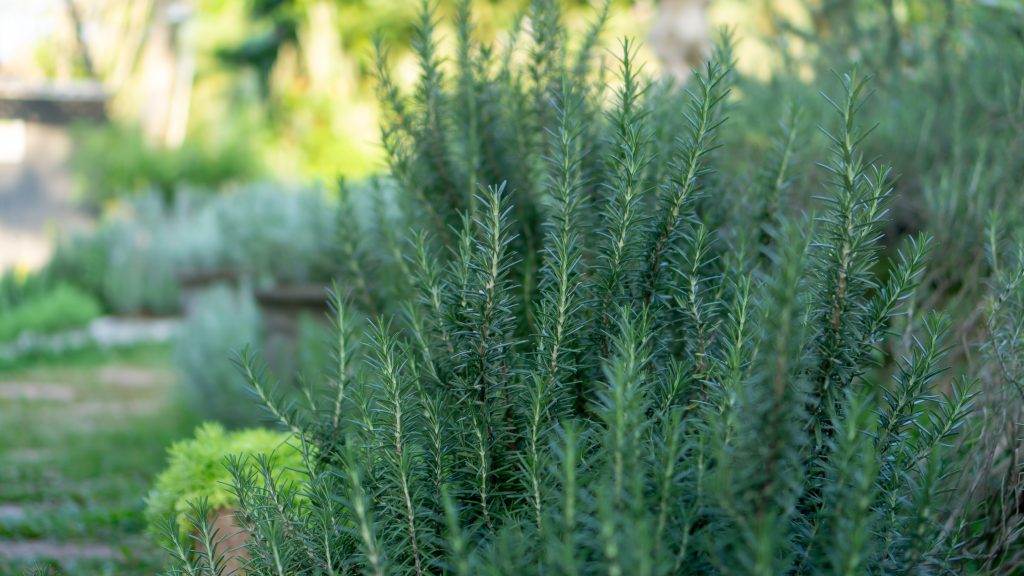
1. Upright rosemary (Rosmarinus officinalis)
This herb is evergreen and can eventually grow to around 1.5m, so it’s perfect for the middle of a pot. It has pretty blue flowers in spring, which are also edible.
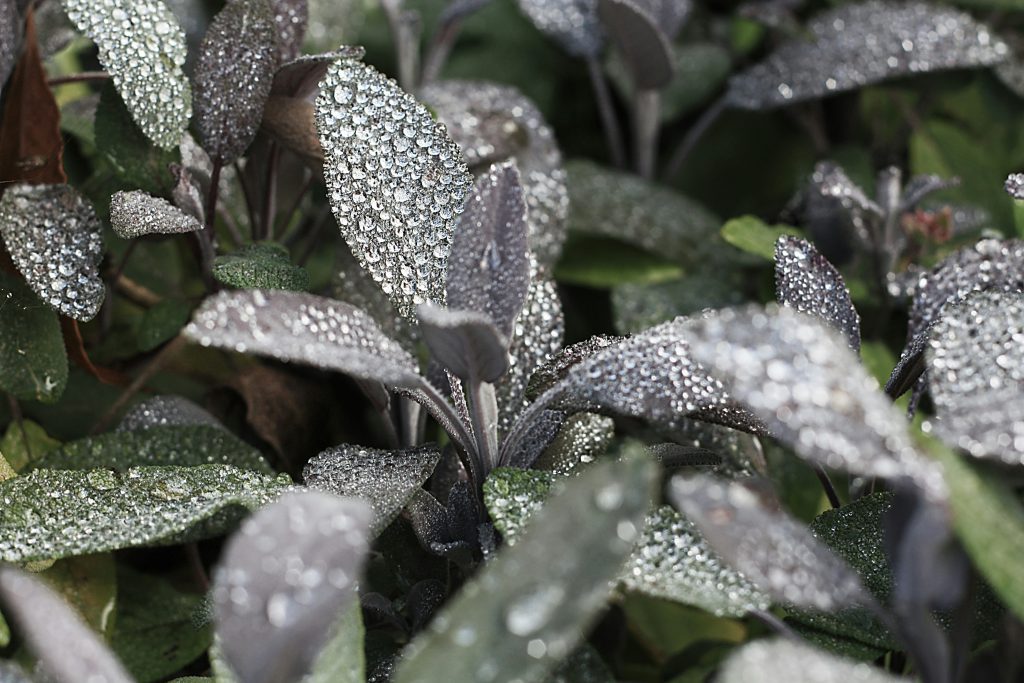
Photo by Nareeta Martin
2. Purple Sage (Salvia officinalis ‘Purpurascens’)
Lovely slightly felted leaves in purple and grey-green. You’ll want to keep touching the foliage to release its scent.
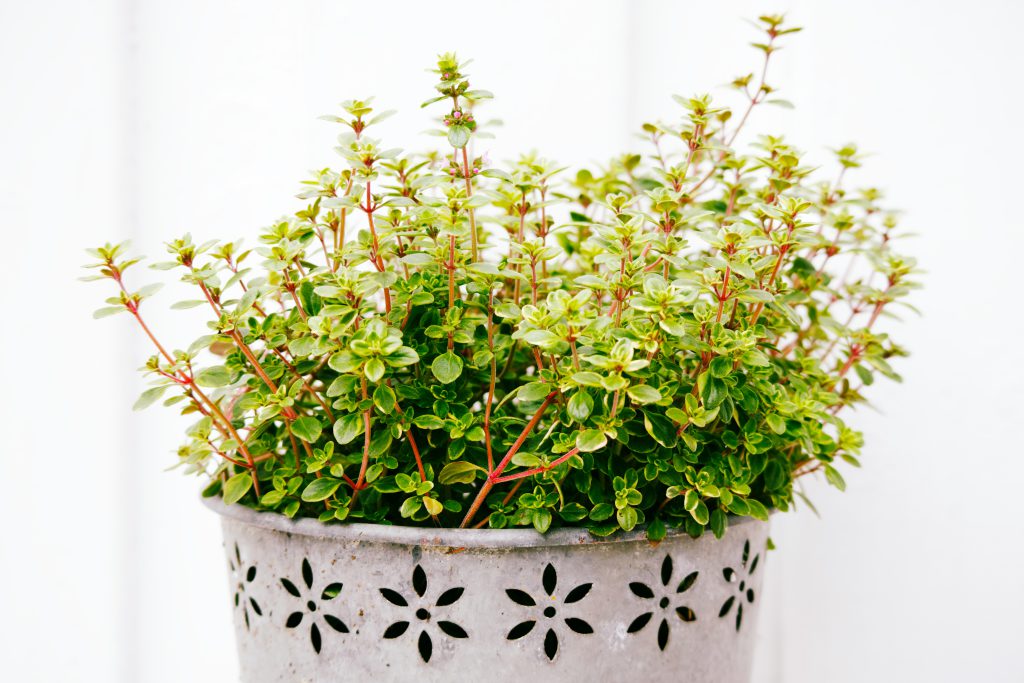
Photo By Kasia Gajek
3. Golden thyme (Thymus pulegioides ‘Aureus’)
Low-growing plant for the front/sides of a pot with aromatic leaves and edible purple flowers that the bees love.
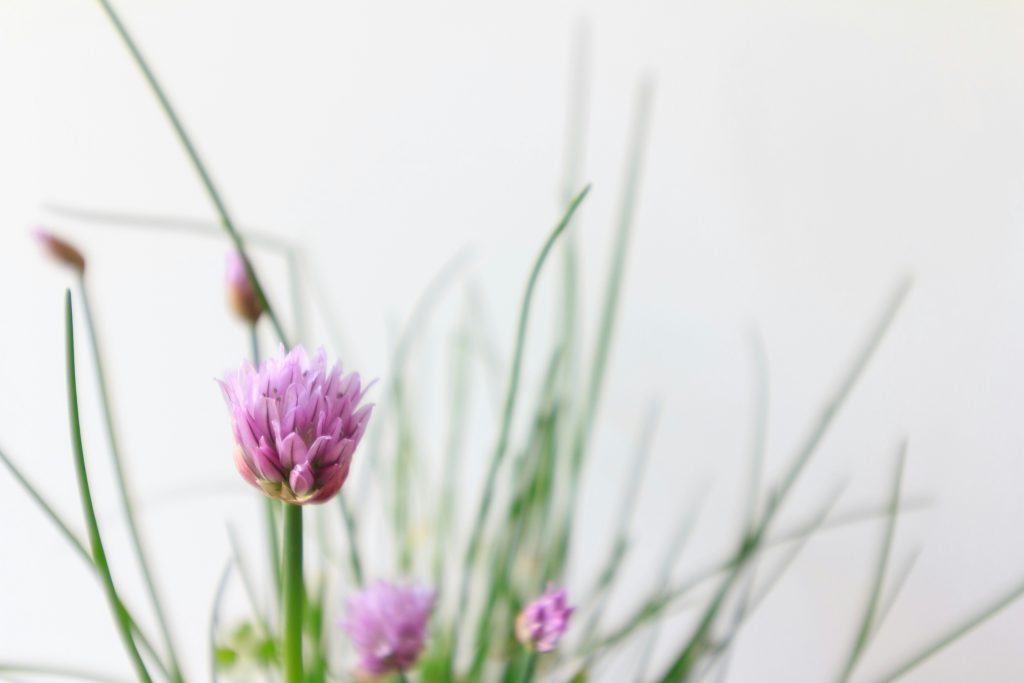
4. Chives (Allium schoenoprasum)
Like a miniature version of the popular purple ornamental alliums – like most herbs the purple flowers are edible as well as the leaves.
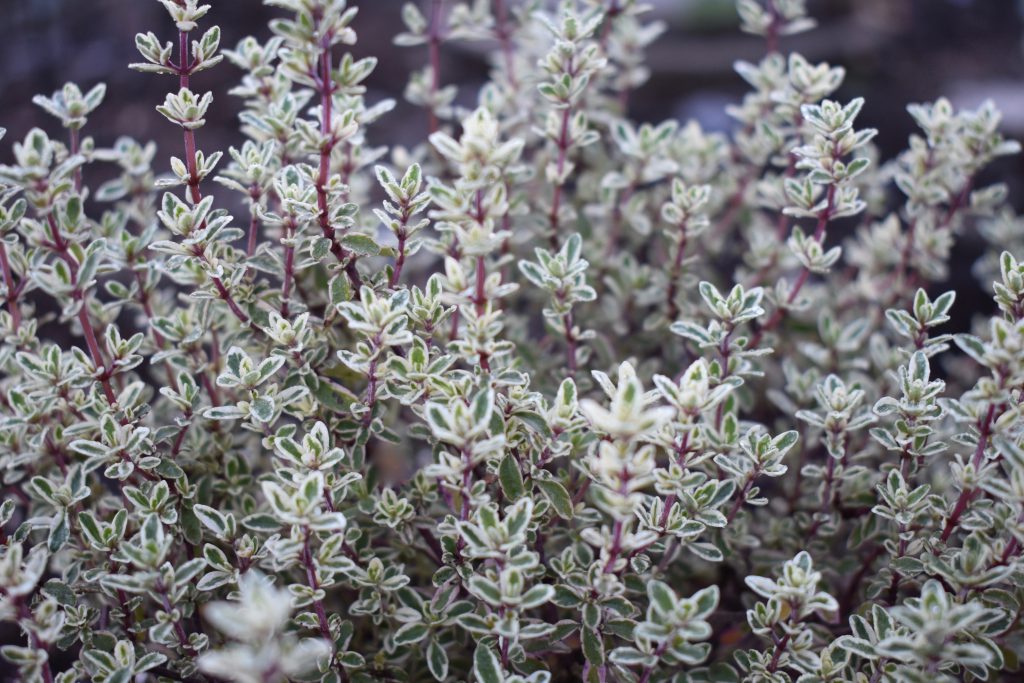
5. Silver thyme (Thymus ‘Silver Posie’)
Low-growing like its golden cousin, above, but each leaf is edged in white, giving a silvered appearance to the plant.
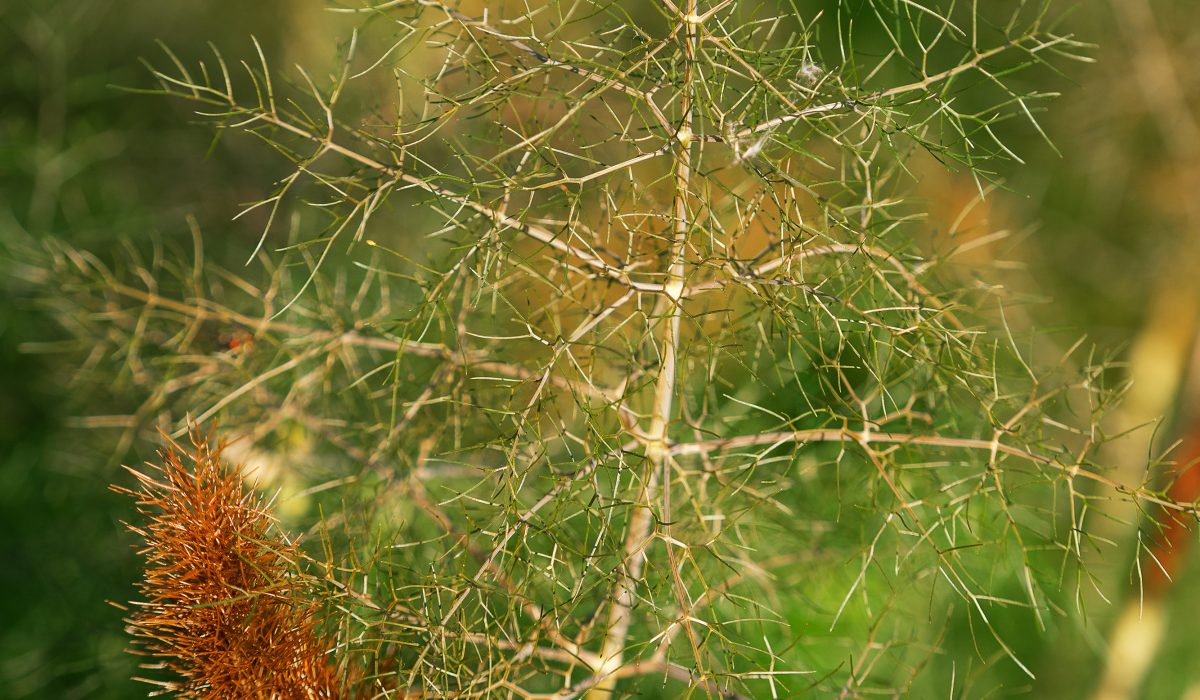
6. Bronze fennel (Foeniculum vulgare)
Gorgeous plumes of soft purple-bronze aniseed-scented foliage that’s delicious with fish, plus flat yellow flowerheads in late summer. We’d be happy to grow it just for its glamorous good looks though…
Remember, if we don’t have specific plants in stock, just come and ask one of the team. We’ll be happy to suggest an alternative or order it for you, if we can.
